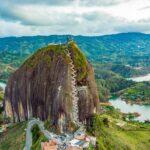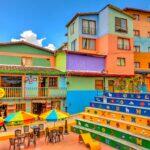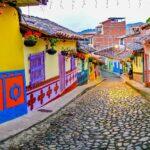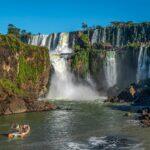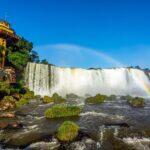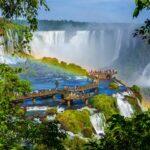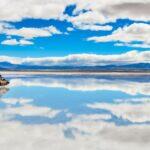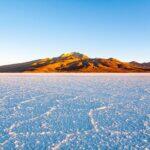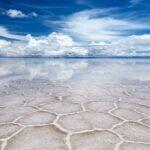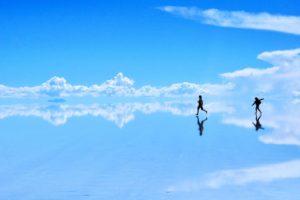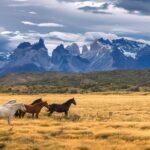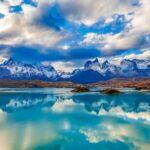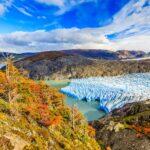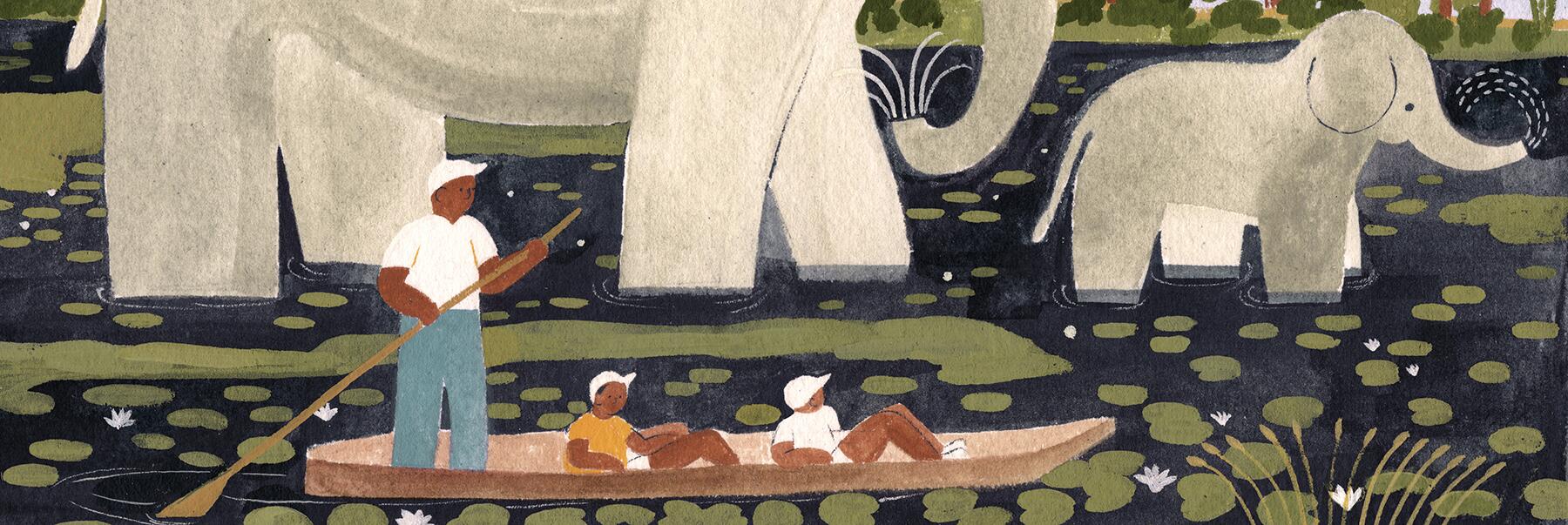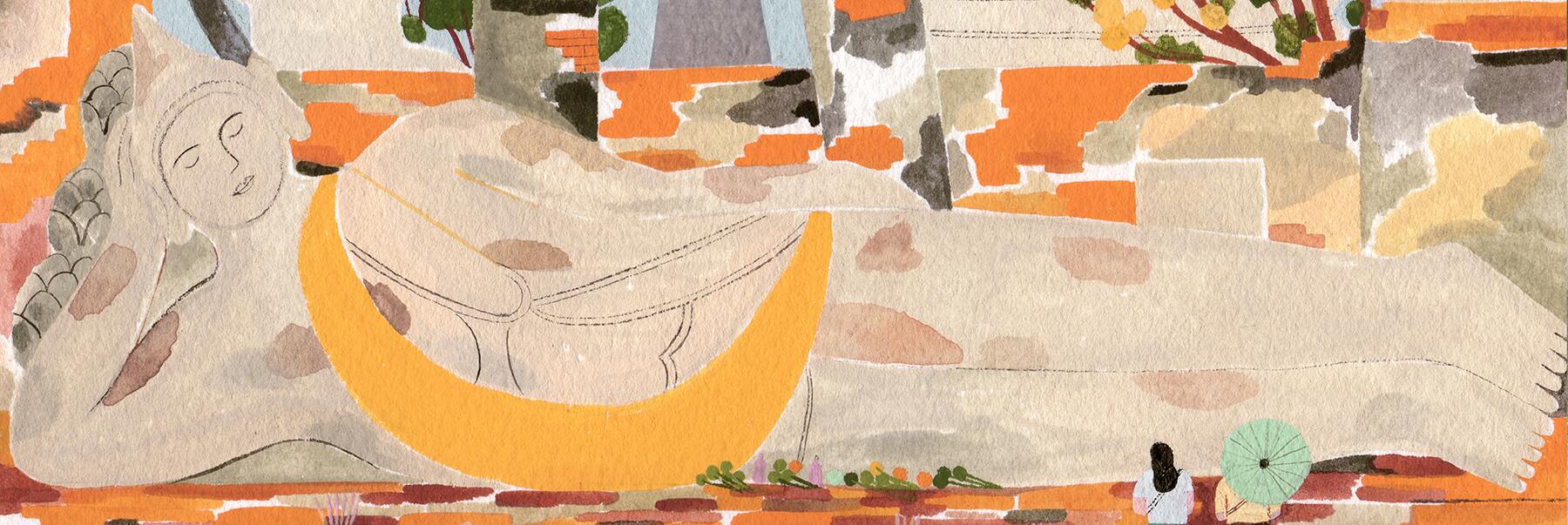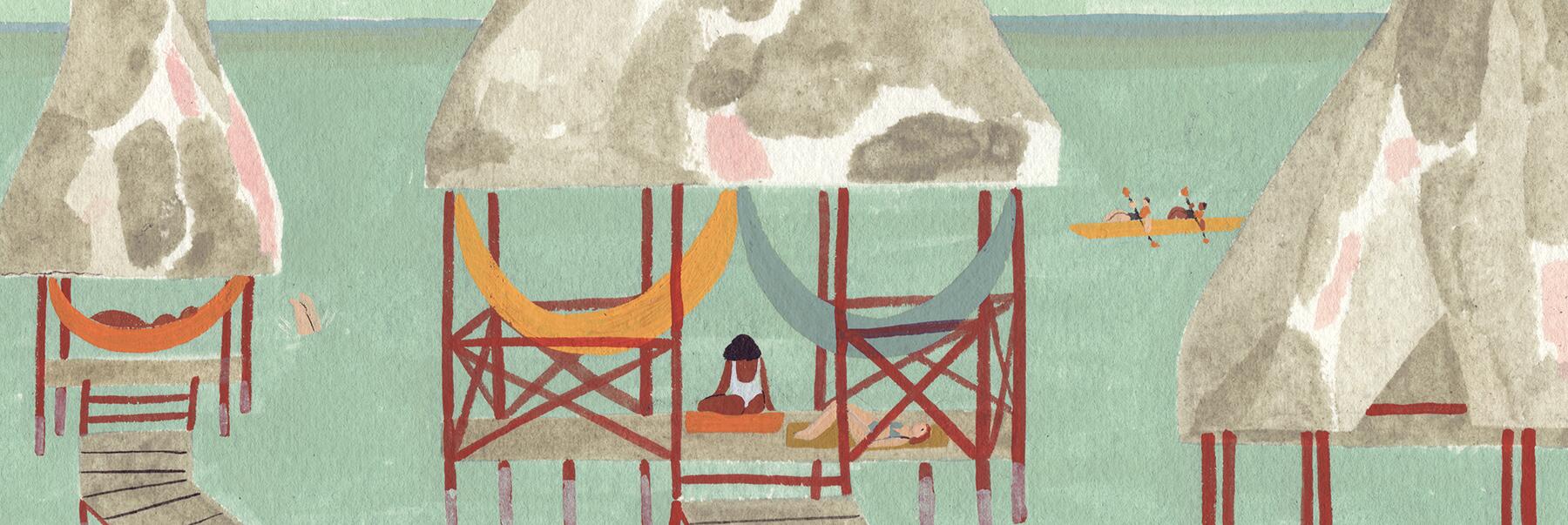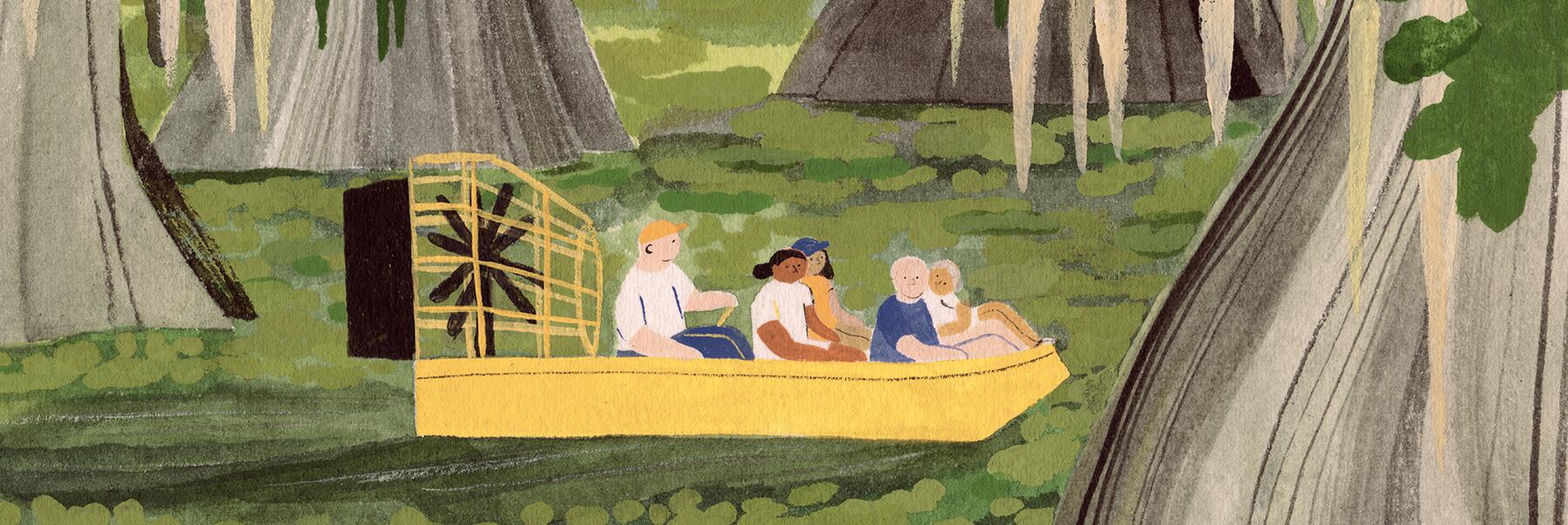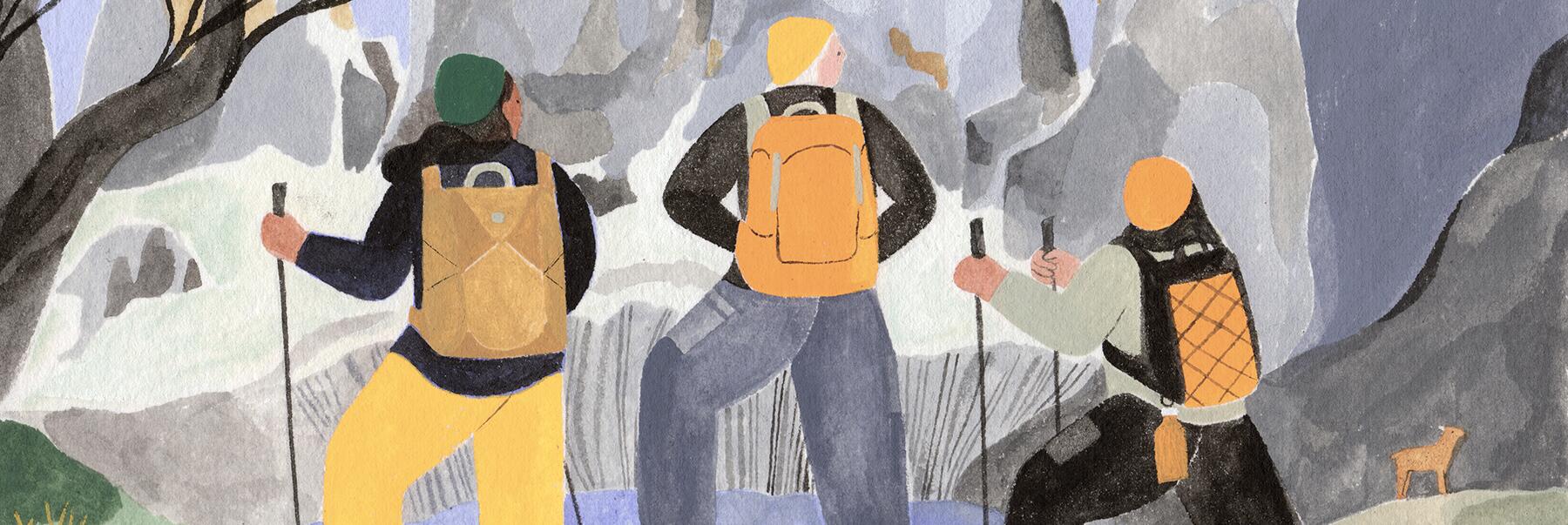
South America
Top places to go in South America in 2023
Expand Full List
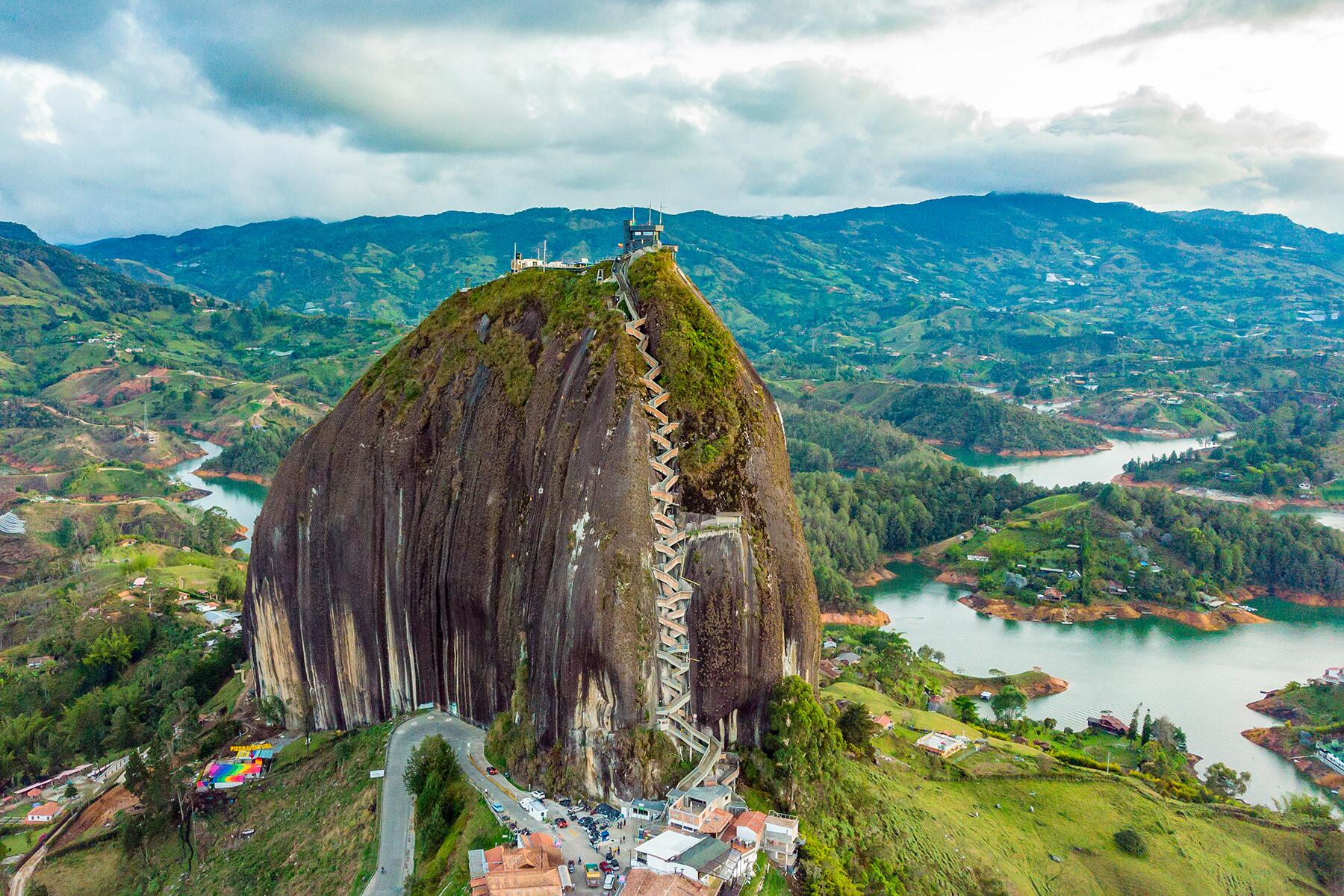
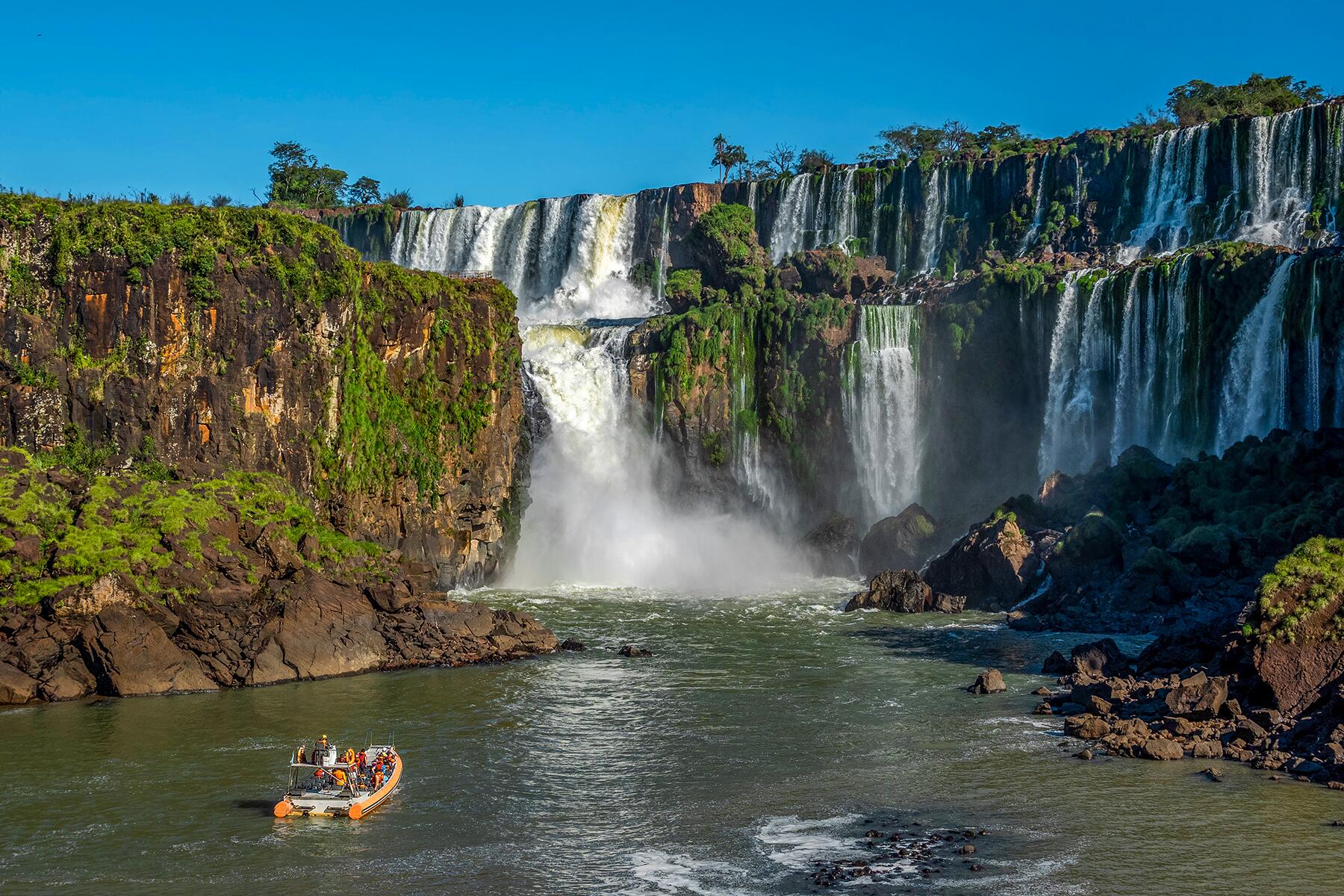
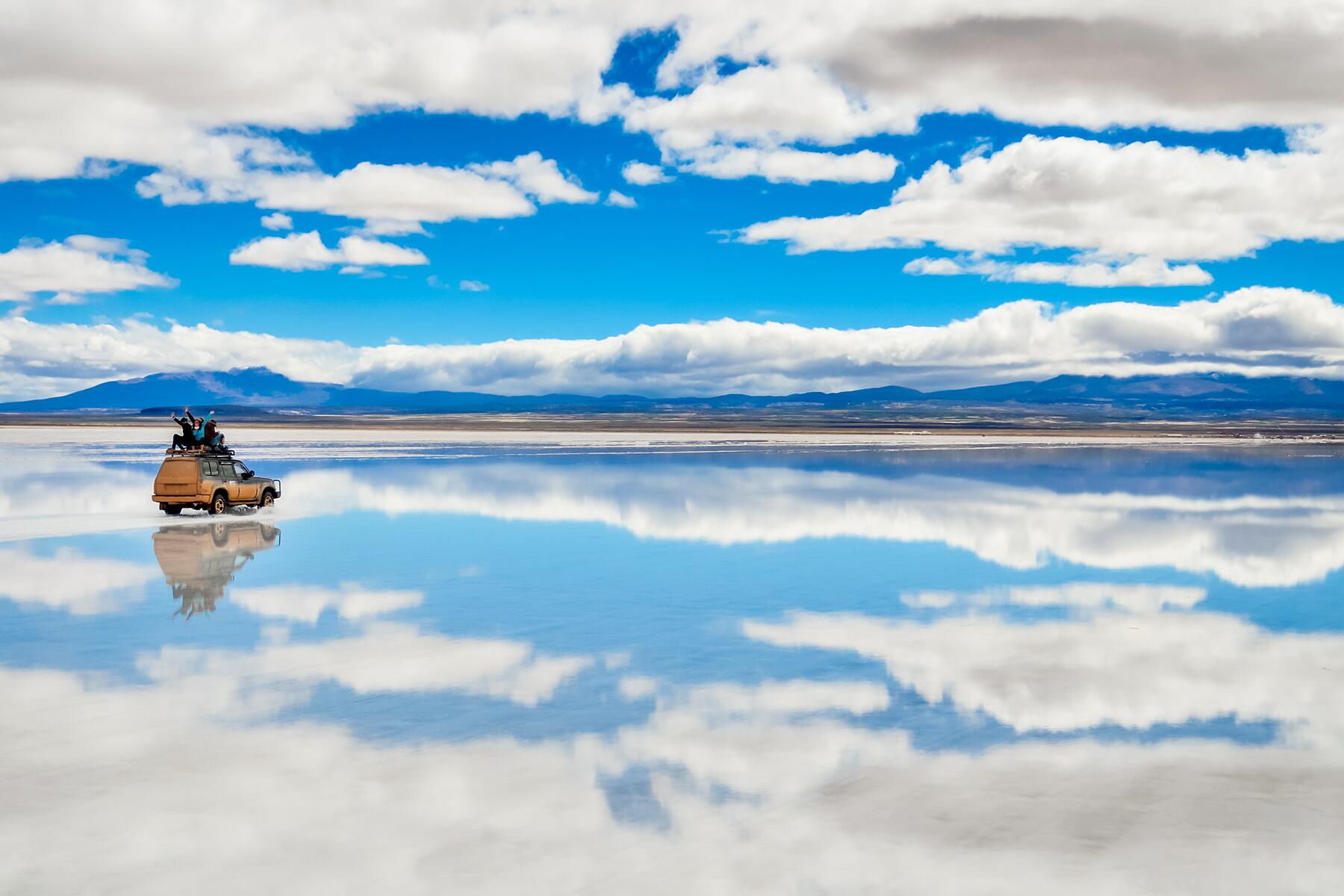
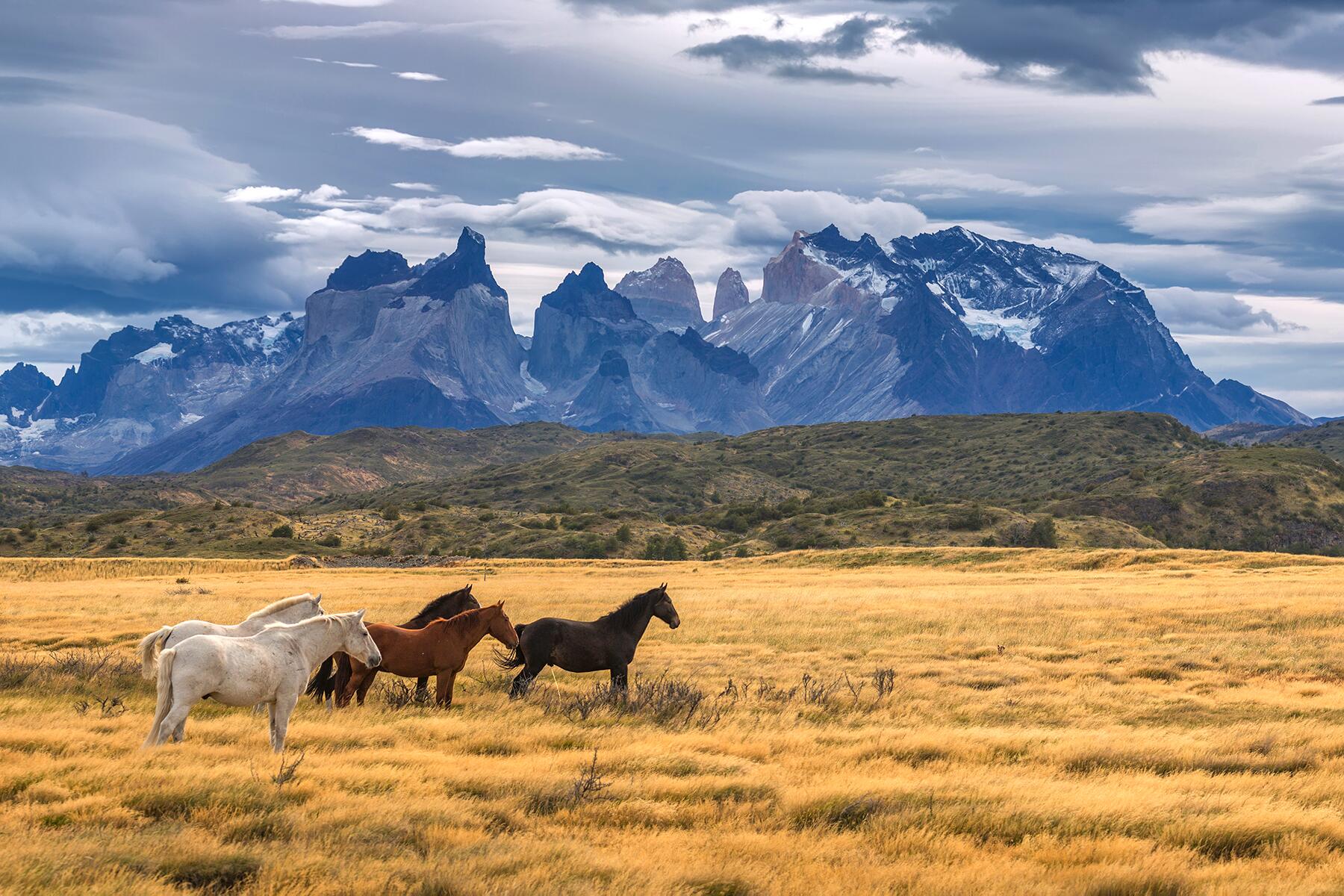
-
Guatape, Colombia
![]()
-
Puerto Iguazu, Argentina
![]()
-
Salar de Uyuni, Bolivia
![]()
-
Torres del Paine National Park, Chile
![]()

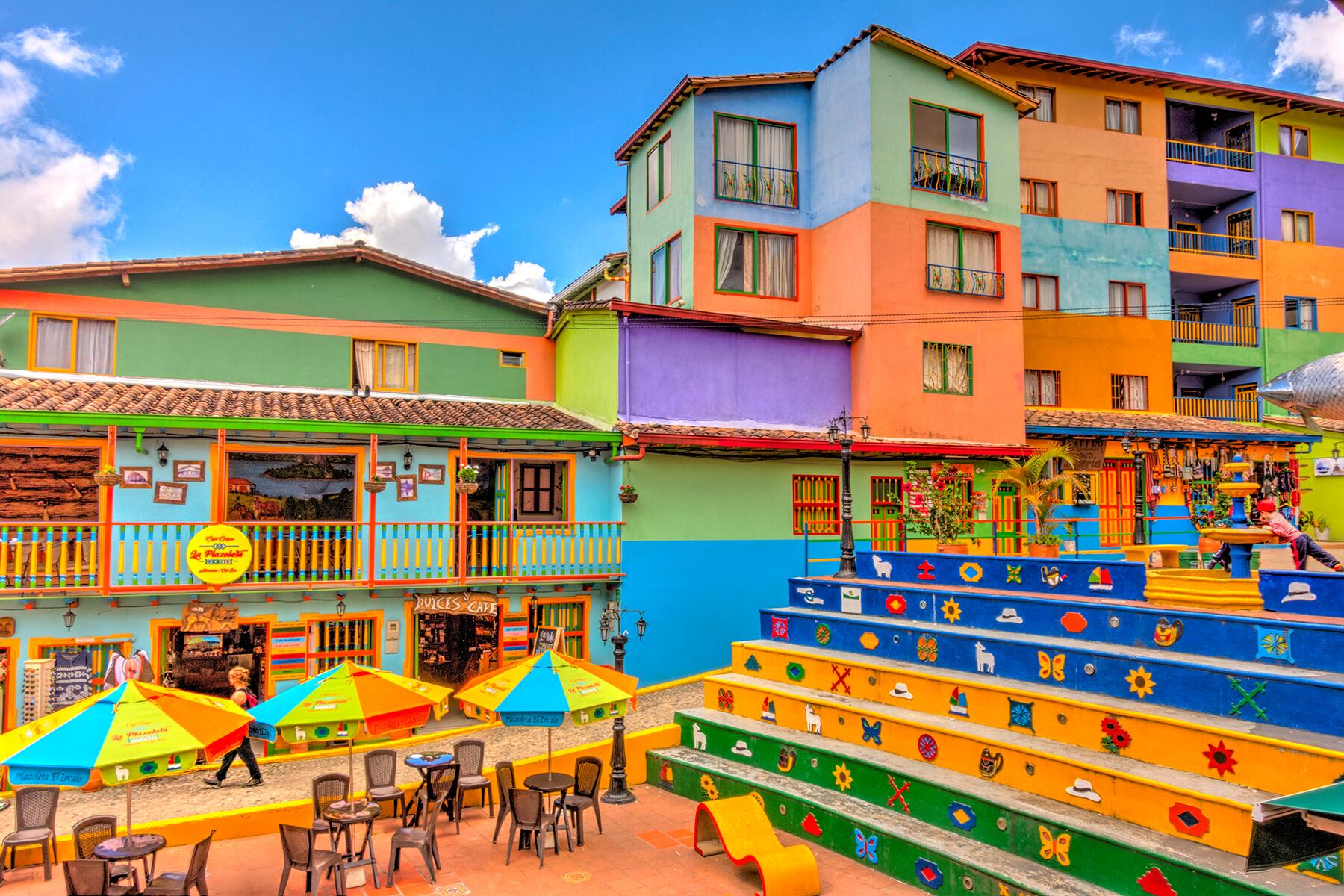
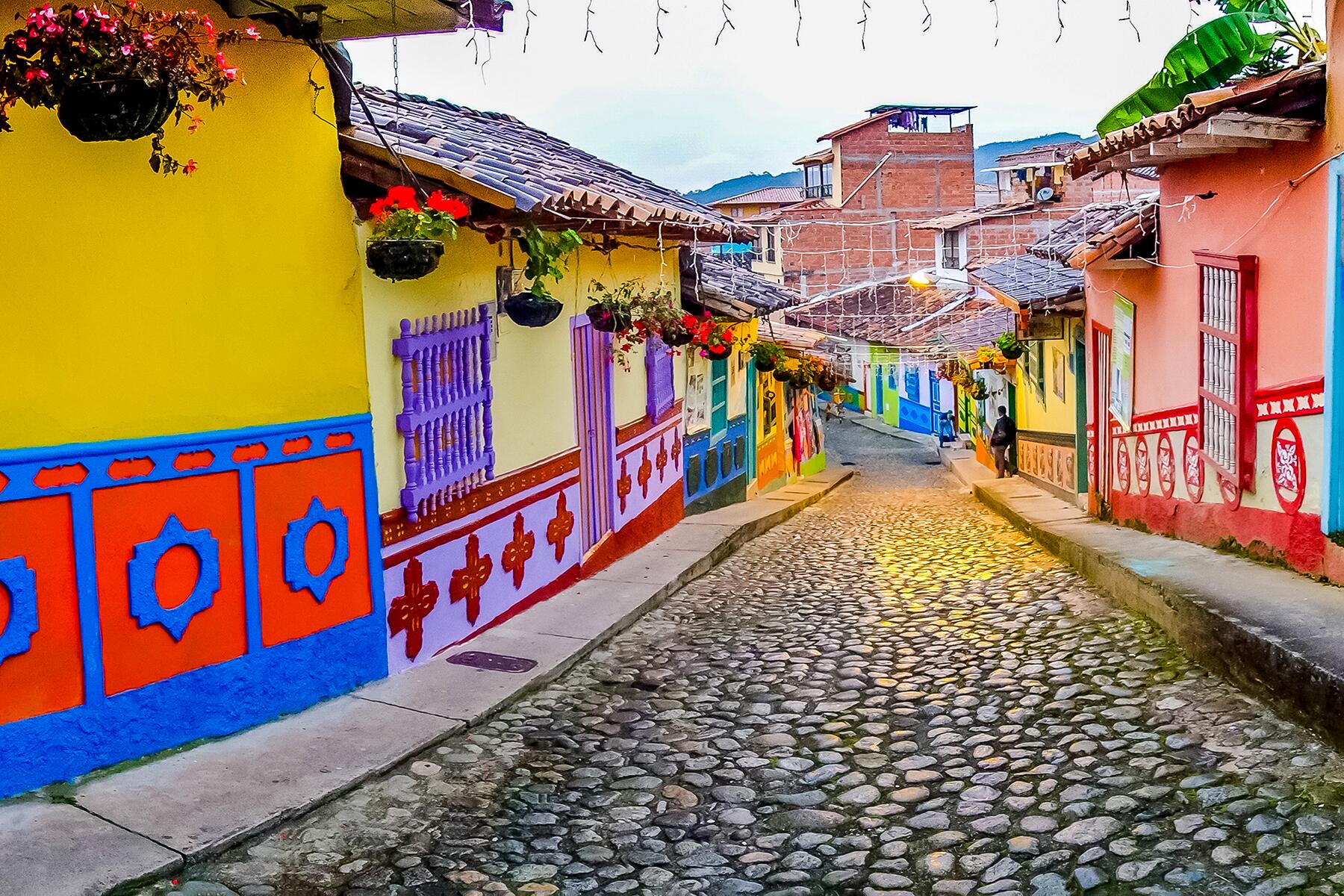
Guatape
Colombia
Three airports may lead to Guatapé (the nearest being Medellin Jose Marie Cordova), however, the Andean resort town is a road trip destination to most municipalities within a driving radius. Piedra del Peñol is undoubtedly the face of Colombia’s most colorful town, overlooking meandering lakes and prolific islands. In the pueblo, you’ll find pastel colors for days in the infrastructure and painted blocks—or zocalos—on the side of local family homes embodying their livelihoods or histories. The premises surround a town square where visitors and locals mingle as one.
Guatapé is also starting to make a splash in tourism and rising as the boating capital of Latin America. Aside from scaling the monolithic, 10-million-ton rock of about 650 stairs, travelers are venturing into the location’s ethereal waters.
Not much compares to journeying through Embalse El Peñol Guatapé, a scenic reservoir surrounded by a melting pot of wilderness, architecture, and culture. Whatever your desired mode of transportation (jet skis, speed boats, ferries), you will explore what is one of Colombia’s largest lakes. Created by constructing a hydroelectric dam that provides 30% of the electricity supply to the country, a colossal floating cross on the lake remains a symbol for the community that once lived on the land and is now underwater.
Cruising through the lake is like diving into a painting of magical realism. You will encounter endless hills of nature intertwined with luxury and local real estate, including Pablo Escobar’s former holiday estate La Manuela, where you can still witness the remains of the 1993 bombing. It’s a stark contrast to Maluma and JBalvin’s homes, which can also be found on the reservoir.
A getaway in Guatapé offers the ability to wake up serenaded by wildlife. Luxé by The Charlee is fabulous for friends, family, or couples if you’re craving cabin opulence vibes. The estate feels like residing on a safari, with tuk-tuks being the mode of transportation, the compound encircling a swimmable lake overflowing with tranquility. More adventurous folks will enjoy Levit Glamping, combining luxury comfort with the outdoors’ revitalization (and amenities). Hello, hot tub, our old friend!
If time is on your side, the best month to visit Guatapé is July. However, weather-wise, July through September or December through March will be lovely. April through June is the rainy season and might limit your activities.
Insider Tip
Much of the town in Guatapé, including the entirety of the El Peñol area, is cash only, so bring your pesos. If you’re road-tripping, assume there will be traffic on weekends and holidays, which can prolong the trip by almost twice the amount of time. If you’re into fake designer goods, this town is also the place to be. Vegans and those who are lactose-intolerant should be careful because meat or milk alternatives are not common, and locals often don’t understand it. Instead of almond milk, ask for “Leche deslacotasada.”

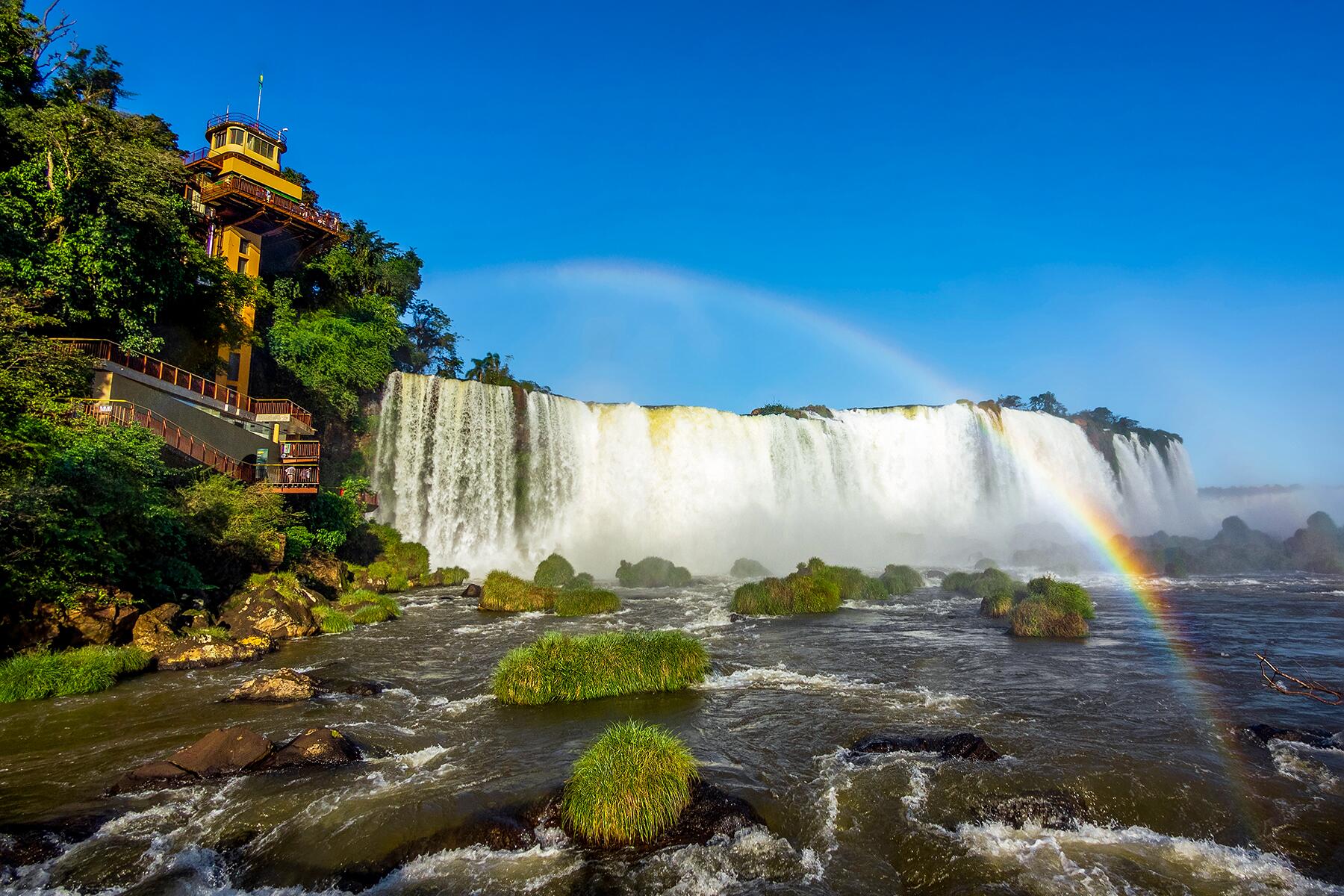
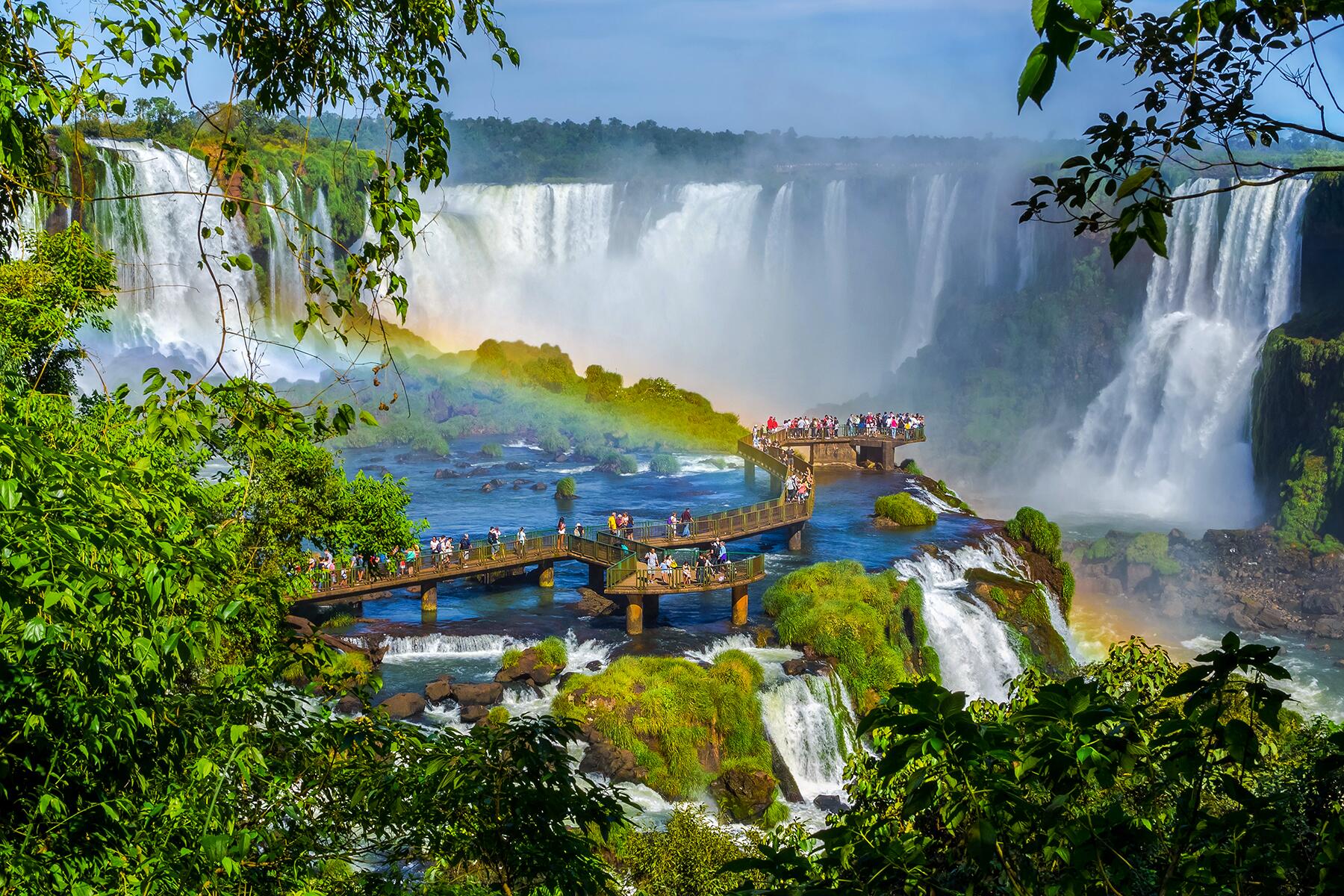
Puerto Iguazu
Argentina
There’s nothing like a brush with nature, and in the case of Iguazú National Park’s most majestic cascade, the Devil’s Throat, waterfalls plunge down 262 feet, lightly baptizing you with a spray of droplets. Iguazú National Park straddles the border of Argentina and Brazil, giving you the option to see the cascades from either country. While the Brazilian side of the park offers more panoramic views, the Argentine side boasts a myriad of trails to bring you close to these natural wonders.
Besides the spectacle of the waterfalls—whose name aptly translates as “Big Water” in the Indigenous Guaraní language—the national park is a wildlife lover’s delight. Home to more than 2,000 species of flora, 500 types of birds, and 80 mammals, including rare species such as the jaguar, South American tapir, and anteater. In the town of Puerto Iguazu, Guira Oga is a wildlife sanctuary and refuge working to rehabilitate and repopulate local wildlife. Consider booking a tour to support the excellent work that they’re doing and see pumas, toucans, and monkeys up close.
Staying in the town itself means organizing tours or taking transport to and from Iguazú National Park, but there’s an array of accommodations from remote jungle lodges to family-friendly resorts in the area. While we highly recommend the 5-star jungle lodge, Awasi Iguazu, which made Fodor’s Finest Hotel List, another good option is the Gran Meliá Iguazú. This family-friendly hotel is the only one located within the national park where you can book rooms offering views of the waterfalls beyond. For larger groups of up to 12, consider the 1930s-constructed inn, Hotel Puerto Bemberg.
March, April, and September are considered the best months to visit Iguazú. Summertime means the rainy season when it can be sticky, muggy, and mosquito-infested. Instead, go in autumn, when water levels are higher, and the jungle is in its flourishing prime. Spring is also a great time for alternating park visits with poolside downtime.
Insider Tip
Get to the national park early and head straight to Devil’s Throat, as this is the most popular vista and gets crowded quickly. You have the option to hike or take a quick train ride to the Devil’s Throat viewing platform, making this the only accessible waterfall trail in the park.
Following the COVID pandemic, visitors must purchase timed entry tickets online before arriving at Iguazú National Park. If you’re staying at a hotel like the Gran Melia or Awasi Iguazú, check with your concierge team, as park tickets may already be included with your stay. If you’re planning to cross the border to visit the Brazilian side of the falls, make sure to check with your hotel team to arrange transportation.
The park offers catamaran rides to get close to the waterfalls. If you’re planning to take one of these excursions, bring a change of clothes or purchase one of the waterproof ponchos sold at the gift shops at the entrance to the park.

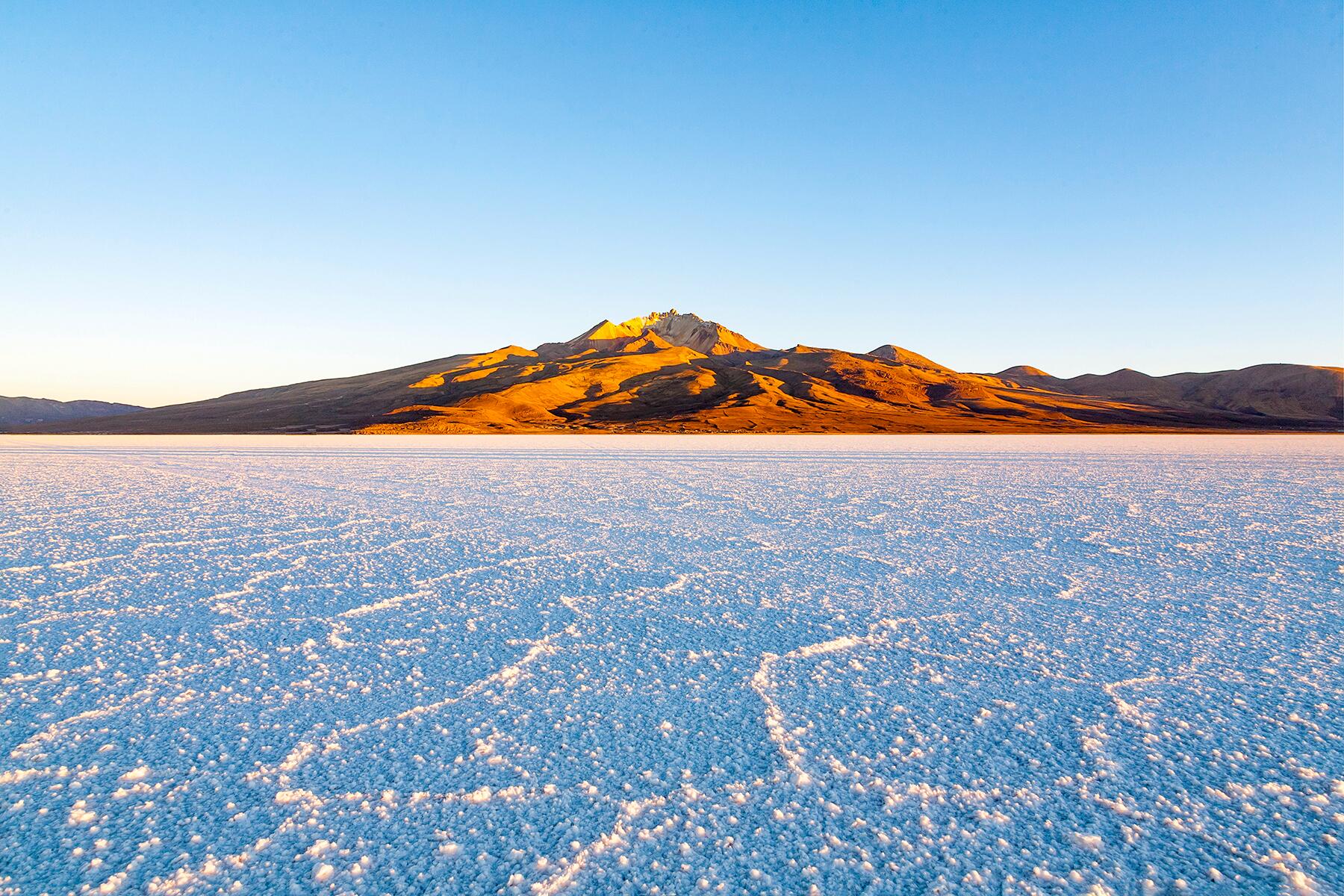
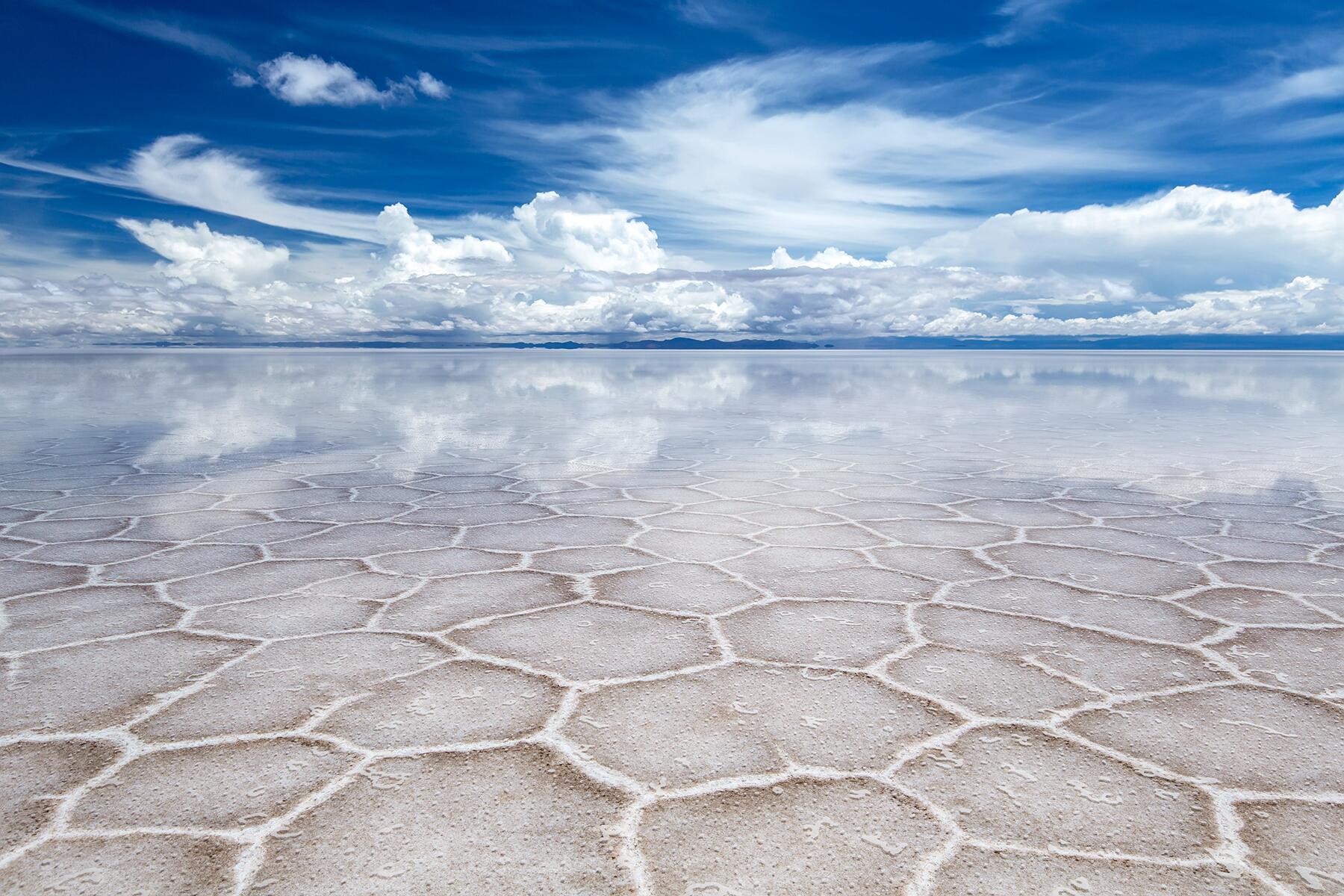
Salar de Uyuni
Bolivia
Get ready for some otherworldly photography. The landscape is so surreal that one section of the desert is named after Salvador Dalí. The endless horizon lends itself to tromp l’oeil photography, so you can play with depth of field to create bizarre photographs, like a person standing in a spoon. The angle of the light in the morning and evening highlights the geometric cracks in the salt during the dry season. After a rain, the landscape is covered with an inch or two of water, turning it into the world’s largest mirror.
The salt flat is so vast that it feels like you’re driving across the ocean. The impression of being at sea is so strong that the few bits of land that stick up in the middle of the flats are called islands. The most famous is Isla Incahuasi, which means “Island of the Inca’s House.” There is a hiking trail around the volcanic island, where you can walk among cacti up to 30 feet tall and look out across the sparkling salt sea.
Most tours include a trip south of the salt flats to colorful red and green lakes. The red Laguna Colorada provides a habitat for wild vicuña, foxes, and three species of flamingos, which nest in November. You will also see hot springs and geysers. The best hotels have natural hot springs in their spas.
Salt hotels are a unique feature of Uyuni and one that you shouldn’t miss. Everything from the walls to the furniture is built with blocks of salt. The most luxurious is Palacio de Sal (which was included on this year’s Fodor’s Finest list) and Luna Salada. Whether made of salt or stone, most hotels are basic and do not have heating. They’ll provide plenty of blankets but think of the experience as semi-camping. You’ll be off the grid during the day, and most accommodations don’t offer Wi-Fi.
Any time of year is beautiful on the salt flats, but the dry and rainy seasons provide very different kinds of beauty. From April to December, the salt flats crack into perfect geometric plates, and the salt sparkles like snow. The rains from January to March turn the landscape into a giant mirror, which creates endless reflections of the sky.
Insider Tip
Uyuni is almost 12,000 feet above sea level, so take it easy if you’re new to altitude. Prepare for headaches and fatigue the first day or two if you’re coming straight from sea level. No matter how acclimatized you are, bring lots of warm layers; it’s cold all year at that altitude.

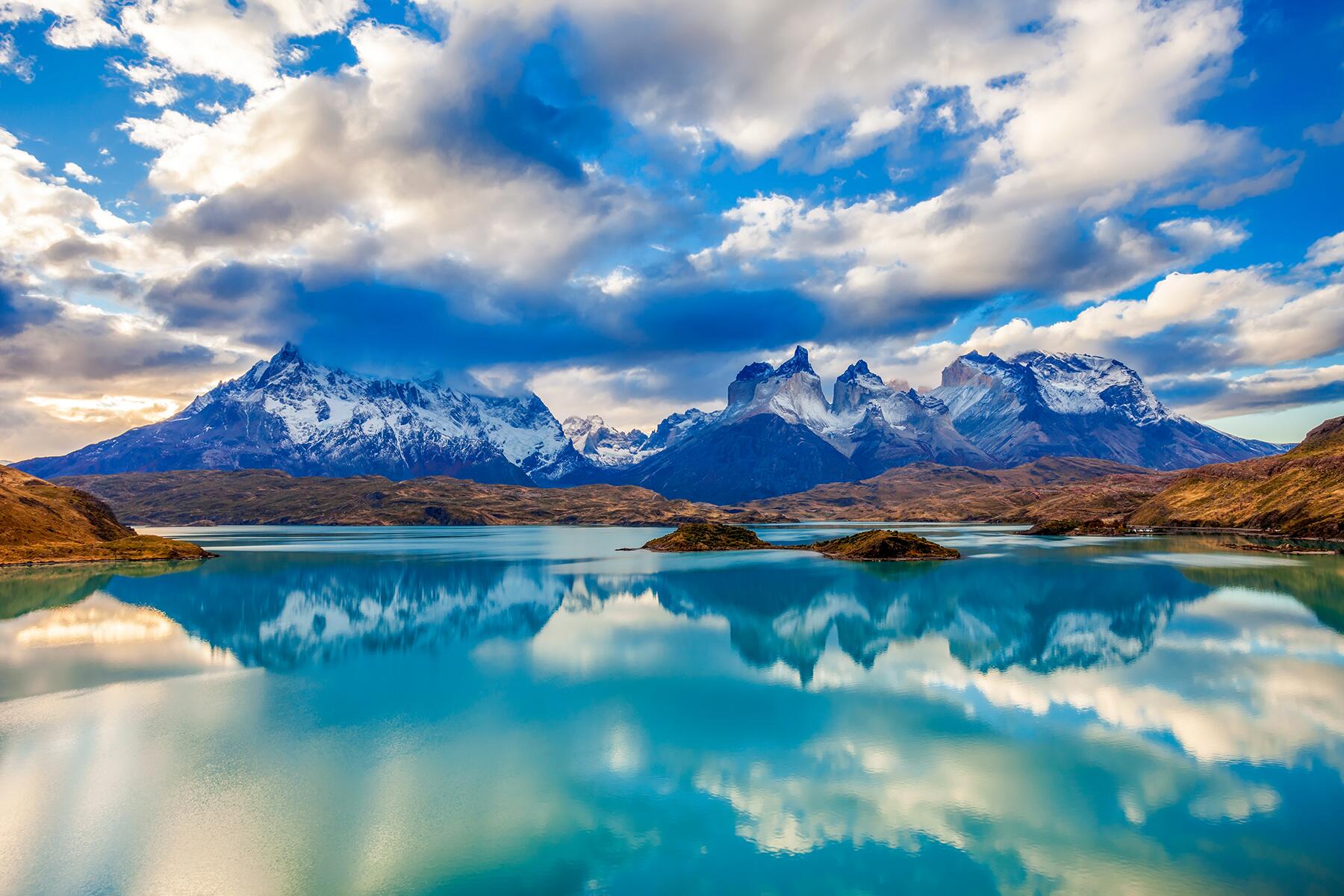
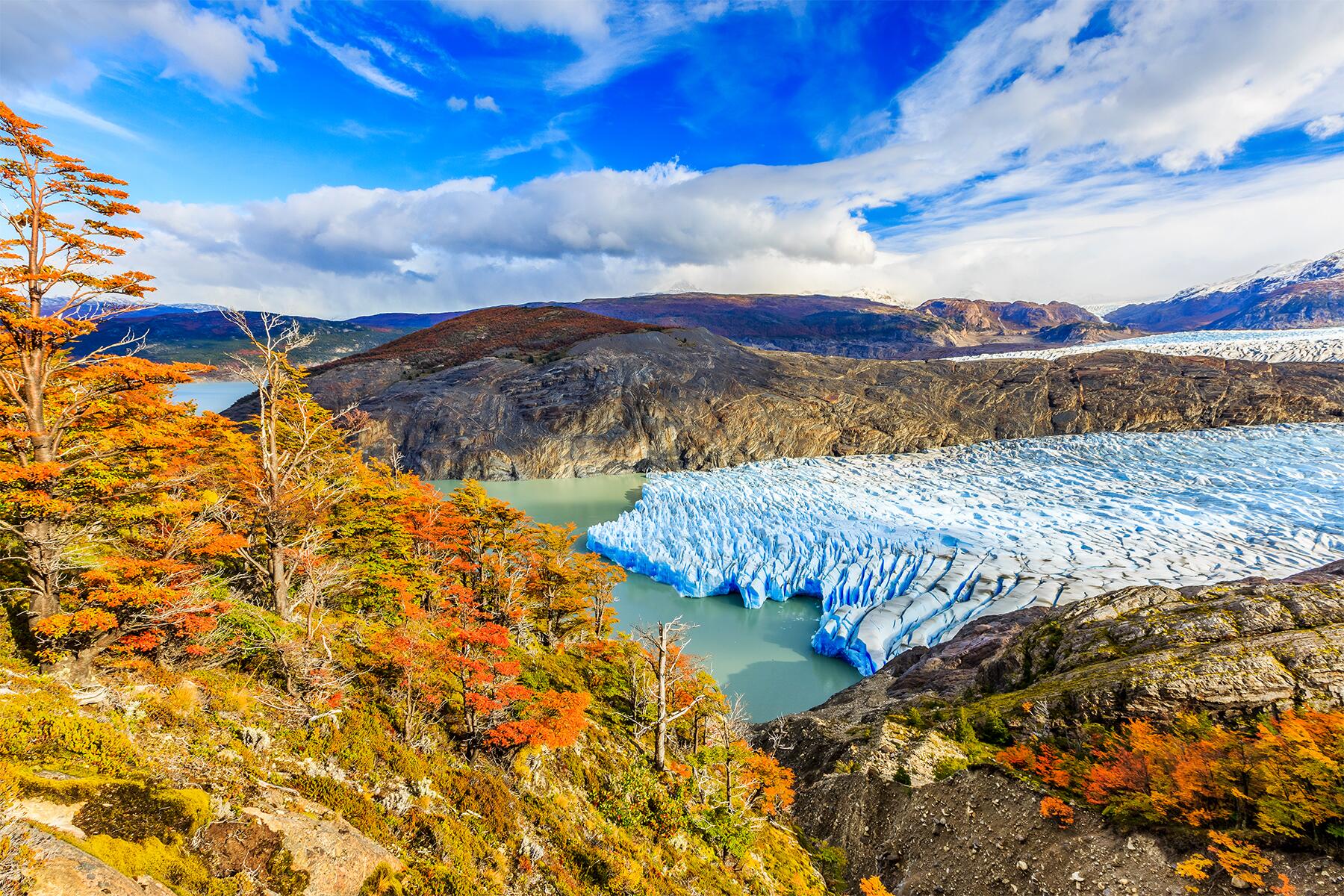
Torres del Paine National Park
Chile
Without any exaggeration, Torres del Paine has some of the most spectacular landscapes on earth. The soaring granite towers, called Torres in Spanish, look too fantastical to be real. The name Paine (pronounced PIE-nay) comes from the word for blue in the Indigenous Tehuelche language. The glowing blue glacial ice, milky turquoise lakes, and blue tint to the granite towers all make this one of the most aptly named places in the world.
So close to the tip of South America and Antarctica, it’s easy to feel like you’re exploring in the age of Shackleton. You can get up close and personal with some of the oldest glaciers on earth that date from the last Ice Age, which started 2.6 million years ago. Sadly, these glaciers are retreating rapidly, which is the reason to visit them sooner rather than later.
Keep your eyes open for wildlife, even from the road. You are almost guaranteed to see foxes and guanaco, a wild relative of the llama. Park visitors regularly see condor, puma, and Darwin’s rhea, a giant flightless bird like the ostrich. If you’re lucky, you’ll see the endangered huemul, a deer endemic to Patagonia.
Inside the park are campgrounds, cabins, hotels, and the luxury lodge Explora Patagonia. Some of the campgrounds and cabins are only accessible from backcountry hiking trails–for which you need a permit reserved months in advance. If you’d rather stay in town, check out nearby Puerto Natales.
The long days of austral summer, from November to February, are perfect for covering many miles on the famous W or O trails. Summer is also the windiest time of year. For more tranquil camping, go in spring from September to October.
Insider Tip
The park is very accessible, whether you’re driving or hiking. Several routes through the park are adapted for travelers who have a day, a week, or a month. All tour agencies in Punta Arenas offer one-day tours of the park. You can also rent a car to visit the park at your leisure. Plan several months in advance to get permits for multi-day hiking and camping in the backcountry.








